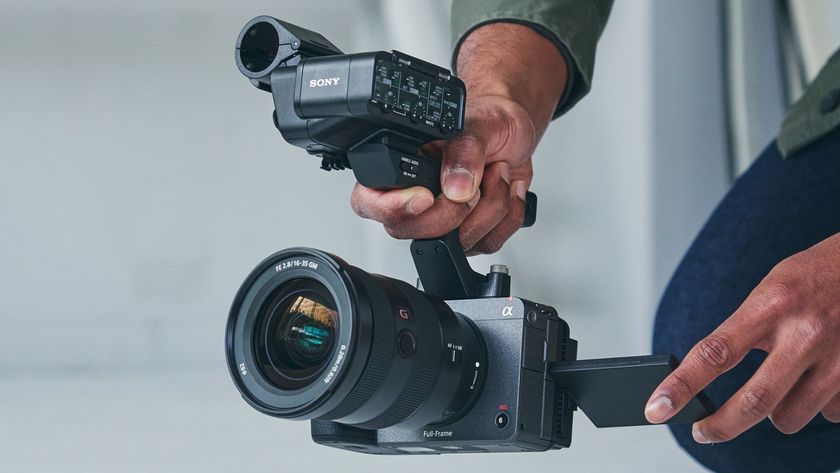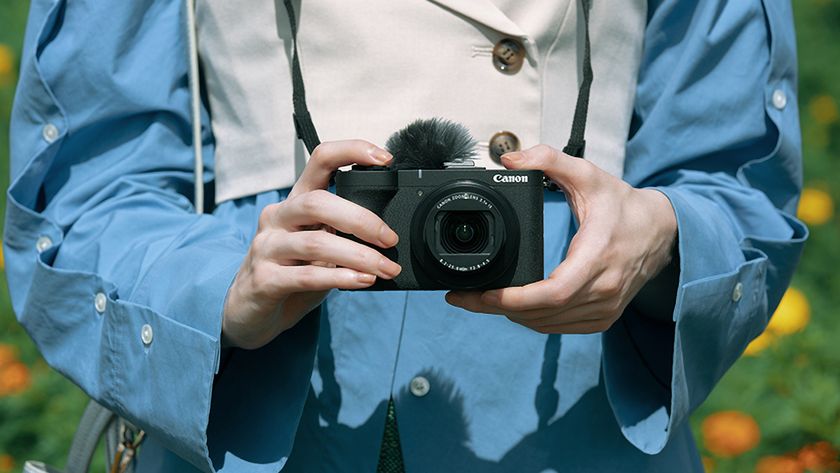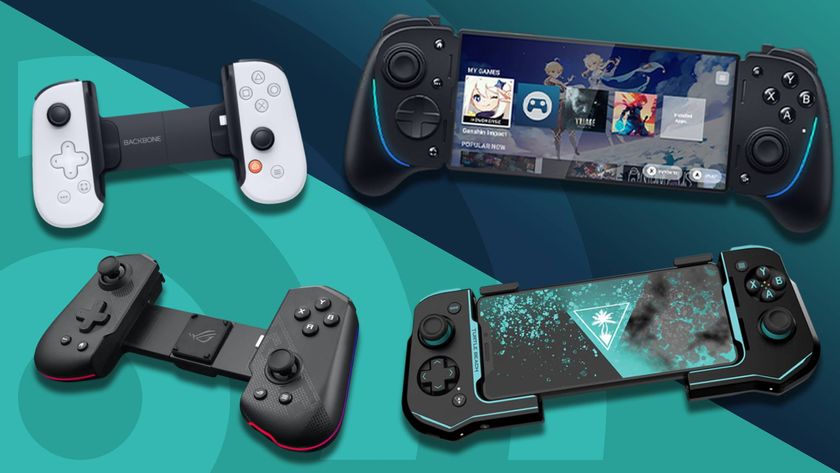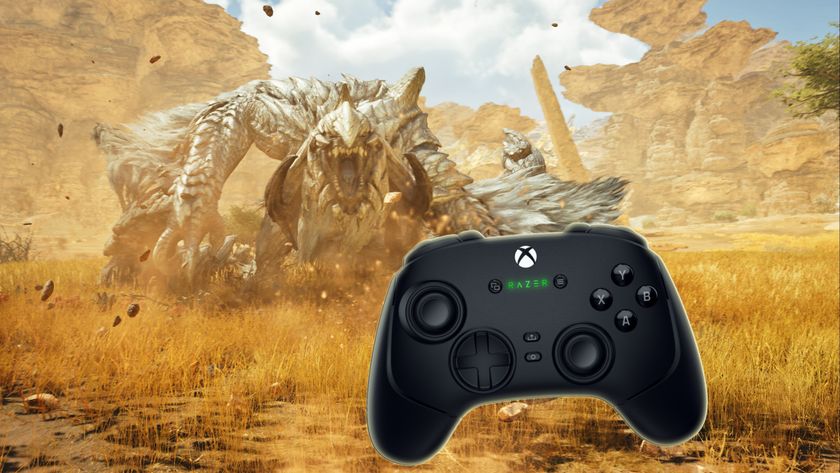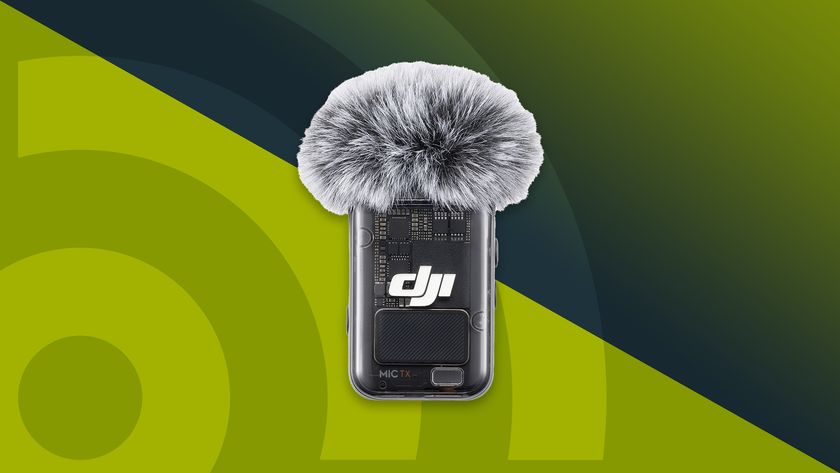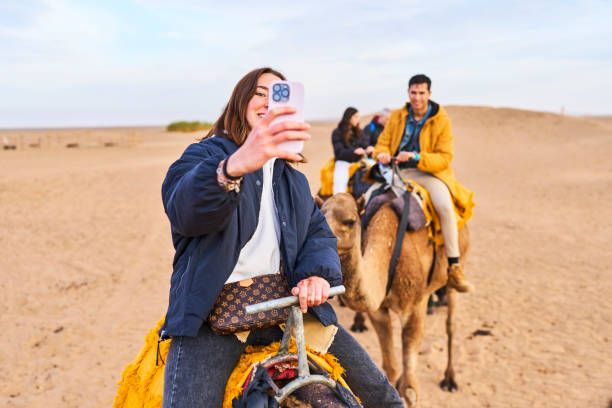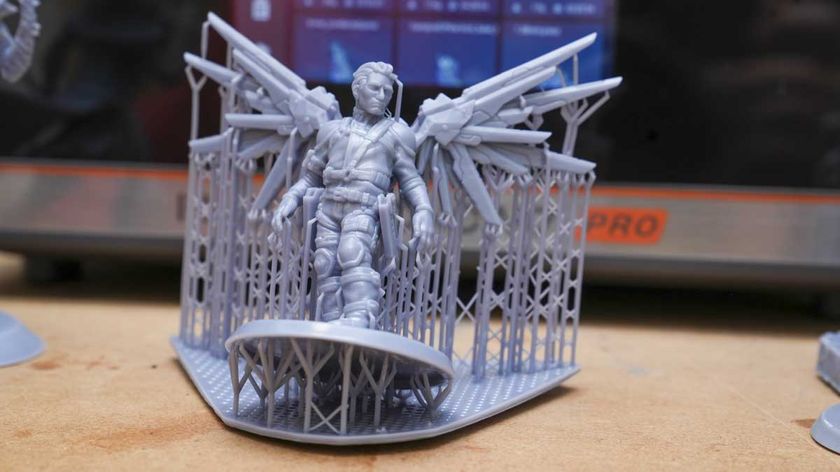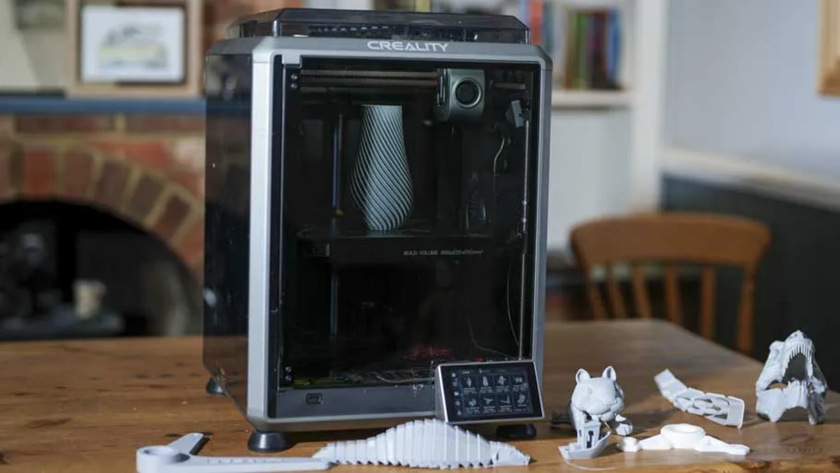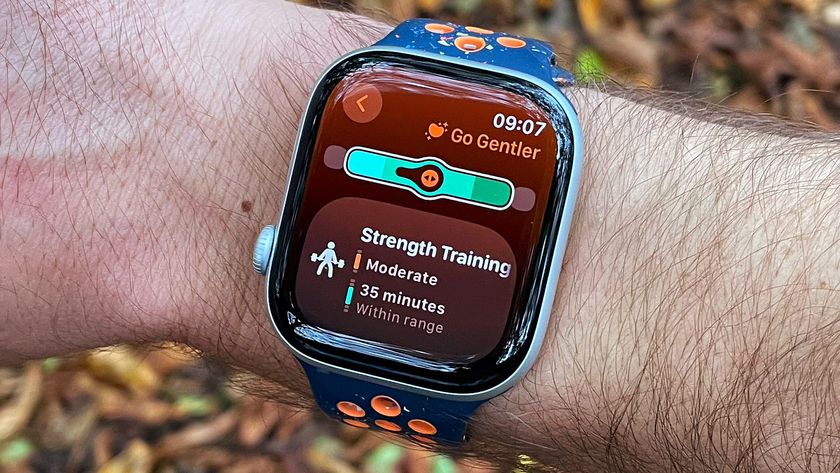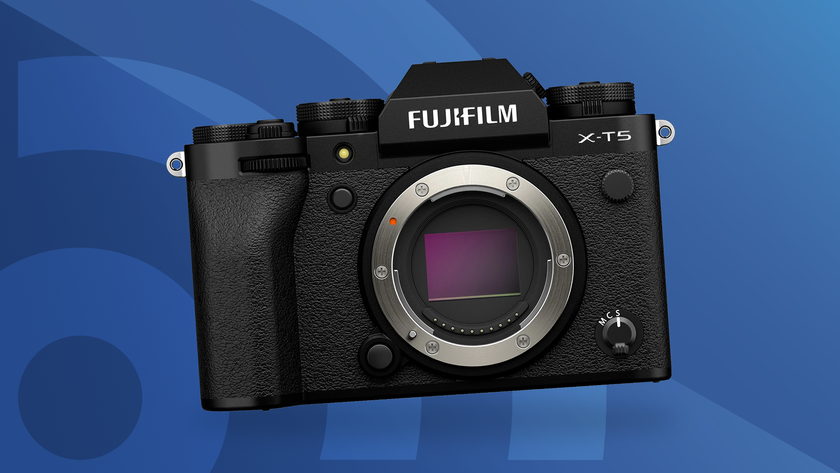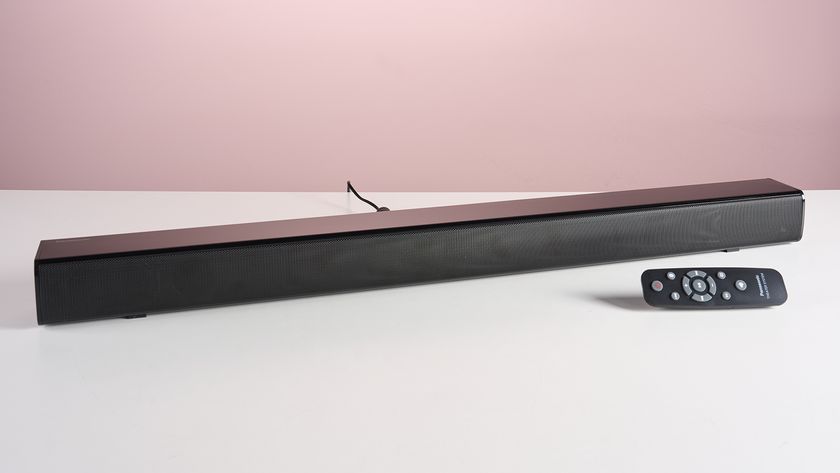The best vlogging cameras for 2025: top choices for every budget
The best cameras for vlogging, whatever your budget
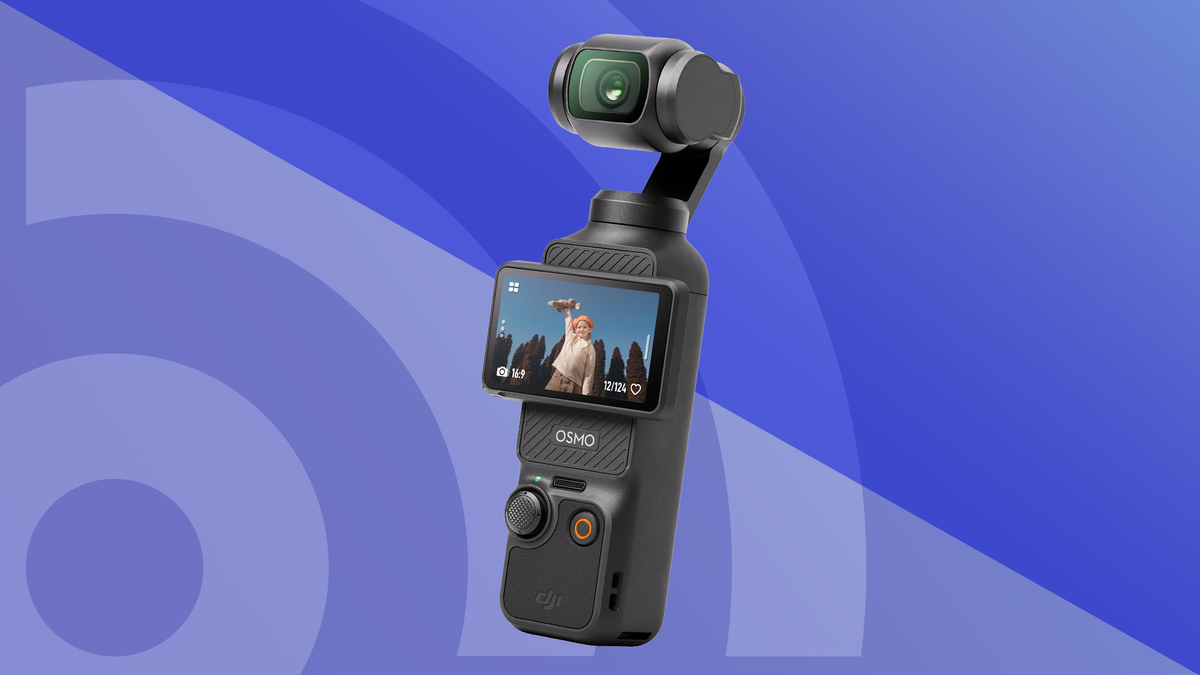
The smartphone in your pocket is a powerful vlogging camera, but if you’re serious about creating video content, we recommend a dedicated camera instead. We've properly tested dozens and dozens of mirrorless hybrids, compacts and pocket gimbal cameras for actual content creation, and listed our favorites below, all of which represent a genuine upgrade for vloggers.
If we had to pick one camera to vlog with, we’d go for the DJI Osmo Pocket 3. Its 1-inch sensor shoots sharp 4K video, while its party trick is a 3-axis gimbal stabilized camera for smooth on-the-go clips. It also has auto-tracking smarts that make it easy for solo vloggers to stay in the frame, plus easy pairing with the best wireless mics for pro quality sound. Altogether, we think it’s a great value pocket-friendly option, so much so that we use it to shoot a lot TechRadar’s TikTok content.
For cinematic vlogs, however, something like the Panasonic Lumix GH7 would be a better bet. Our guide is designed to help you choose the best vlogging camera for your unique requirements. Below you’ll find the results of our in-depth reviews distilled into helpful summaries. We’ve divided the list by use-case, so you can easily land on your ideal vlogging camera, and included links for the best deals.
Top 3 picks
If you're short on buying time, use the summary below for a shortcut to the best vlogging cameras. When you find one that fits your needs and budget, follow the links beneath each entry to jump down to our in-depth explainers.
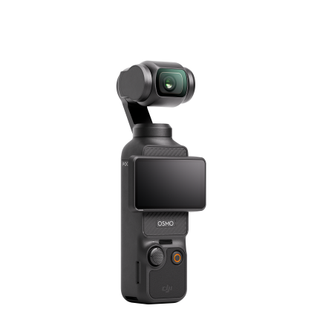
The best pocket vlogging camera
Combining gimbal stability with a super-portable design and accessible price, the DJI Pocket 3 is a fantastic tool for solo vloggers.
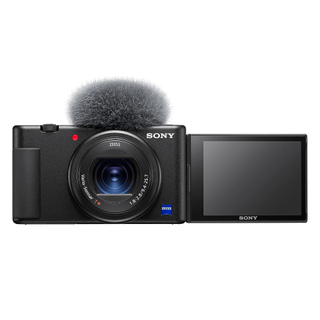
The best compact vlogging camera
With a compact build, superlative autofocus and side-flipping screen, the Sony ZV-1 puts powerful vlogging abilities in your pocket.
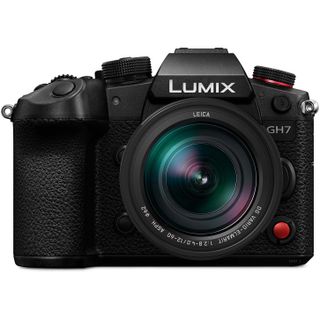
The best premium vlogging camera
With superb image stabilization and array of video modes, the GH7 is a fantastic Micro Four Thirds camera for vlogging.
Best by use-case
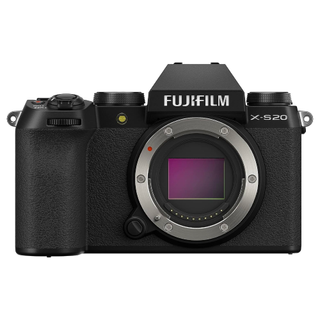
The best hybrid vlogging camera
With a dedicated vlogging mode and impressive video features, the Fujifilm X-S20 makes it easy to create quality content.
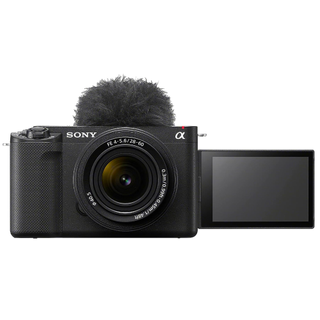
The best full-frame vlogging camera
With simple controls and a capable full-frame sensor, the Sony ZV-E1 makes it easy to shoot high-quality 4K vlogs in any light.
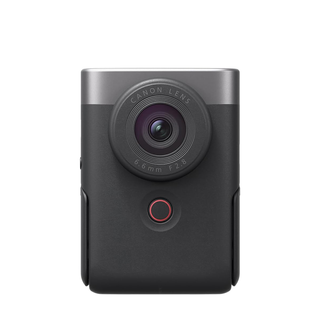
The best purpose-built vlogging camera
Designed to make vlogging a cinch, the Powershot V10 isn’t perfect, but its size and price make it appealing for novices.
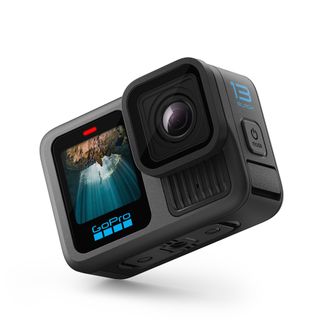
The best action camera for vlogging
An action camera with an arsenal of video modes and Lens Mods, the Hero 13 Black is a reliable tool for those who shoot adventurous vlogs.
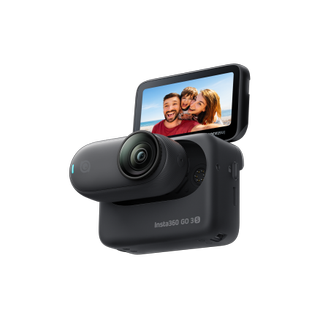
The best miniature vlogging camera
With a clever remote control charging case, the Insta360 Go 3S is a tiny 4K tool for shooting otherwise impossible vlogging content.
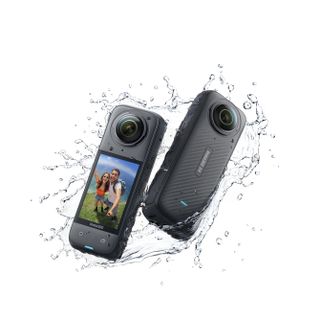
The best 360-degree vlogging camera
The best-ever handheld 360-degree camera boasts 8K video, powerful performance and neat 360-degree effects.

Tim is TechRadar's Cameras Editor. With more than 15 years’ experience in the photo video industry, he has acquired an expert knowledge of all things camera-related. Tim has tested most of the latest cameras, and thanks to his work as a freelance videographer, he knows exactly what makes one good for vlogging. He notes, "any video camera can technically record a vlog, but the models we’ve recommended here make it as easy as possible to shoot high-quality content. Because vlogs span a variety of genres, we’ve tried to cover the full spectrum of options in our round-up, ranging from compact action cameras to full-frame mirrorless models."
The best cameras for vlogging in 2025
Why you can trust TechRadar
Below you'll find full write-ups for each of the best vlogging cameras in our list. We've tested each one extensively, so you can be sure that our recommendations can be trusted.
The best pocket vlogging camera





Specifications
Reasons to buy
Reasons to avoid
DJI Osmo Pocket 3 sample video
✅ You shoot handheld solo vlogs: ActiveTrack is your personal cameraman, while the three-axis gimbal offers unparalleled stabilization.
✅ You value portability: As the name suggests, the Pocket 3 is superbly portable and easy to carry for any vlogging situation.
❌ You shoot a lot of photos, too: While improved, the 1-inch sensor is still lacking in low-light photo quality and features less resolution.
❌ You’re happy with your smartphone: A gimble mount like the DJI OM 5 could work for you if you prefer to shoot solely with a phone.
The DJI Osmo Pocket 3 is a superb compact vlogging camera, which massively improves on the already highly-rated DJI Pocket 2. Not only do you get a pocket-friendly form factor and silky smooth footage thanks to a three-axis gimbal, but its video quality is capable of keeping up with larger devices like the Sony ZV-1. New features like a 1-inch sensor and 2-inch rear LCD cement its place as the best vlogging camera for most people. The former not only improves the Pocket 3’s low-light capabilities and resolution, but also crucially ramps up support for multi-aspect video.
The DJI Osmo Pocket 3 will give you a substantial upgrade versus a smartphone when it comes to vlogging. You get support for 4K 120p (fantastic for slo-mo footage), while its pocket-friendly size and gimbal make it much more convenient than an interchangeable lens camera. It supports remote mics too, although the onboard mic is more than enough for decent audio quality. Thanks to a rotating touchscreen rear display, switching between a vertical aspect ratio or traditional horizontal 16:9 is seamless – and the resulting footage is fantastic, as you’re not losing out on any detail.
Read our in-depth DJI Pocket 3 review
The best compact vlogging camera





Specifications
Reasons to buy
Reasons to avoid
Sony ZV-1 sample footage
✅ You want a pocketable vlogging tool: Compact yet packed with features, the Sony ZV-1 offers a fantastic balance of portability and vlogging performance.
✅ You want best-in-class autofocus: Powered by a Bionz X processor, real-time Eye AF tracks and locks on to subjects with unrivalled speed and accuracy.
❌ You want the smoothest footage: Active SteadyShot stabilization works well, but it’s no match for the steadying gimbal of the DJI Pocket 2.
❌ You vlog in all conditions: The ZV-1 is a well-made vlogging camera, but the lack of weather-proofing means it’s not one to use in the rain.
Compact and powerful, we think the Sony ZV-1 nails what most people want from a small vlogging camera. Its compact packaging gives it excellent versatility, as do its hotshoe, mic port, and fully articulating touchscreen. In field testing, we found its real-time tracking and Eye AF to be best-in-class and the 1-inch sensor was capable of producing crisp, detailed 4K/30p video. Our review also confirmed that the ZV-1 offers a huge amount of depth for a compact camera, with handy features like a built-in ND filter and S-Log2 profiles for those who want to embrace color grading.
While the newer Sony ZV-1F offers a wider 20mm lens and smartphone-style interface for a lower price, its older contrast AF system and coldshoe mount mean it can’t oust the original from the top spot. Nor can the Sony ZV-1 II, the pricier successor to the ZV-1 that features a wider lens but no in-body stabilization. These are great cameras, but their feature sets don't merit the extra cost - especially when Sony is continuing the sell the the ZV-1.
Read our in-depth Sony ZV-1 review
The best premium vlogging camera





Specifications
Reasons to buy
Reasons to avoid
Panasonic Lumix GH7 sample footage
✅ You want a video powerhouse: You'll struggle to find a better array of powerful video codecs and cinematic color profiles for the price.
✅ You appreciate good handling: The Panasonic GH7 is well-built with rugged magnesium alloy frame, fits nicely in the hand and has amazing image stablization.
❌ You need a full-frame sensor: The GH7 delivers great results with its Micro Four Thirds Sensor, but full-frame rivals fare better in low lighting.
❌ You want a compact vlogging camera: Considering the sensor size, the GH7 is a chunky camera.
For the money, you'll struggle to find a more powerful video camera than the Lumix GH7. It has an embarrassment of recording riches: 5.7K 30p ProRes RAW HQ internal recording, 4K 120p and FHD 240p slow-motion video, plus support for Real Time LUTs. Its pro-level video resolution, array of 10-bit modes, choice of frame rates and color profiles are ably supported by industry-leading image stabilization and unlimited record times thanks to a built-in cooling fan. There's even some industry firsts, including built-on 32-bit float audio recording (with XLR2 mic adapter).
It's 25.2MP Micro Four Thirds sensor won't be for everyone, especially low-light shooters. Our tests also revealed that battery life could be better, and it's quite a chunky camera considering the sensor size (especially compared to the full-frame Lumix S5 II). But by keeping the best bits of the GH6 – including its robust build – and fixing its flaws, we Panasonic has created an incredibly powerful hybrid. There's really very little to detract from what is an excellent first camera for aspiring filmmakers.
Read our in-depth Panasonic Lumix GH7 review
The best hybrid vlogging camera





Specifications
Reasons to buy
Reasons to avoid
Fujifilm X-S20 sample video
✅ You want top video specs: 6K/30p 4:2:2 10-bit internal recording puts the X-S20 right up there with the best vlogging cameras in terms of video quality.
✅ You want a camera to grow with: It’s not cheap, but the X-S20 is accessible for beginners to use, yet also has the features to let you improve.
❌ You need a tough camera: The X-S20 is very well put together, but no weather sealing means it isn’t a camera that can survive in all conditions.
❌ You’re on a tight budget: Even with updates aplenty, a steep price hike over its predecessor means budget-minded buyers might think twice about the X-S20.
The Fujifilm X-S20 takes everything that made the X-S10 one of our favorite vlogging cameras and introduces features that make it feel like a more user-friendly option for fledgling content creators. Inheriting the well-balanced body of the X-S10 means the X-S20 sits very comfortably in the hand, while our first impressions in testing found that simplified dials on the top plate make it easier to get to grips with what is quite an advanced shooting tool. It also inherits the same 26.1MP X-Trans CMOS 4 sensor as the X-S10 and X-T4, which we already know from our previous tests is a top performer.
The X-S20 boosts things further by offering 6K/30p 4:2:2 10-bit internal recording, which is close to overkill. Improved in-body image stabilization also worked well in testing. With a bigger battery on-board, we think this all adds up to a great mirrorless all-rounder. Its price hike will be a drawback for many beginners, while the lack of weather sealing is a broader disappointment. The older X-S10 is still available at a lower price, but features such as a dedicated Vlog mode – which puts neat creative settings a tap away – make the X-S20 the more tempting proposition for vloggers.
Read our in-depth Fujifilm X-S20 review
The best full-frame vlogging camera





Specifications
Reasons to buy
Reasons to avoid
Sony ZV-E1 sample video
✅ You’re a solo vlogger: Small and light, the ZV-E1 is properly portable, while AI tech assists content creators by taking care of focus and framing.
✅ You want rapid output: AI tools like Auto Framing reduce the editing workload, while the Cine Vlog setting produces lovely footage out of the camera.
❌ You’re a video pro: A single card slot, recording time limits and no cooling vents mean the Sony ZV-E1 isn’t a camera for power users.
❌ You don’t shoot slow-mo: If you don’t shoot vlog content at higher frame rates, you might find better value from the Sony ZV-E10.
A good vlogging camera should be compact and easy to operate, boxes both ticked by the Sony ZV-E1. As the smallest, lightest full-frame camera with image stabilization, we found it a winner for solo vlogging. The ZV-E10 is even more portable, but you won’t get the same video quality from its smaller APS-C sensor. It’s not perfect for heavy use, with no cooling vents and just one card slot. We also found it tricky to pick out details on the touchscreen when working outdoors. But if you’re a content creator shooting alone, we still think the ZV-E1 is the ultimate full-frame choice for 4K vlogging.
Our tests found it capable of capturing crisp 4K 60p footage in all lighting conditions, thanks to a full-frame sensor borrowed from the revered A7S III. We were also impressed by its in-body image stabilization, which produced superbly smooth handheld footage that almost makes a gimbal unnecessary. Cutting-edge AI smarts also leave very little to fix after the fact: Auto Framing reliably tracks subjects across the image, which we think is a big win when you’re recording alone.
Read our in-depth Sony ZV-E1 review
The best purpose-built vlogging camera





Specifications
Reasons to buy
Reasons to avoid
Canon Powershot V10 sample video
✅ You want a simple vlogging camera: Designed as a point-and-shoot solution for vlogging, the Powershot V10 is stripped back to the core features.
✅ You want a travel-friendly camera: With a flip-up screen and flick-out stand, the Powershot V10 is functional yet inherently portable.
❌ You want the best-quality video: It’s unique, but dated tech means many of the best camera phones can shoot 4K vlogs that look just as good.
❌ You value manual control: Designed not to be intimidating, the Powershot V10 limits user control to a manual exposure mode, so it’s not one for pros.
Purpose-built for vlogging, the Canon Powershot V10 is the first of a new breed designed to rival the phone in your pocket. It uses the same 1-inch sensor as the Powershot G7 X III from 2019, but optimised to work with a fixed 18mm F2.8 lens to rival the Sony ZV-1F. While dated in some ways, it has a natural advantage over most smartphones, producing sharp, detailed results in bright conditions, aided by subject-tracking that proved reliably sticky in testing. Digital image stabilization is a little jittery when smoothing footsteps, but this will likely improve with future firmware updates.
We found its form factor curious in our review: there's room for improvement, but it handles well on the whole. Though it would benefit from better front-on visibility, the 2-inch flip-up touchscreen is useful for framing, while the simple control setup – including a big record button – proved pretty foolproof. We also found that its built-in stand makes life easier when working solo. Straightforward wireless live-streaming also enhances the camera’s vlogging chops. So while it can’t compete with the latest alternatives, the Powershot V10 makes sense as a pared-back choice for vloggers who want point-and-shoot simplicity.
Read our in-depth Canon Powershot V10
Find savings on Canon cameras with our Canon voucher codes.
The best action camera for vlogging





Specifications
Reasons to buy
Reasons to avoid
GoPro Hero 13 Black sample video
✅ You shoot vlogs for social: Thanks to a sensor with an 8:7 aspect ratio and high resolution 5.3K video, the GoPro Hero 13 Black lets you easily create quality vertical videos.
✅ You want the most versatile action cam for vlogging: GoPro's new Lens Mods, debuted with the Hero 13 Black, are a win for vlogging, especially the Macro and Anamorphic options.
❌ You plan to shoot in low light: The 1/1.9in sensor goes all the way back to the Hero 11 Black, and while it shoots sharp footage, it struggles with noise handling in lower lighting conditions.
❌ You want a hybrid for stills: Many of the cameras in this list double up better for photography than the video-focused Hero 13 Black.
If you're an adventurous vlogger, we think the GoPro Hero 13 Black is the best action cam for you. GoPro's flagship model is a modest update on the Hero 12 Black, but the upgrades make a big difference for vlogging. A new HB-series of Lens Mods and ND filters are a dream even if they are pricey extras. Special mention goes to the Macro lens which addresses the common pitfall action cameras have of modest close focusing capabilities, meaning you can turn the camera on yourself more comfortably. The Anamorphic Lens Mod could make for cinematic shots when it hits the shelves in 2025.
GoPro also finally introduced magnetic mounting and so there's now three convenient methods for mounting the Hero 13 Black, while battery life is much better. Otherwise, much is the same in GoPro's best action cam, which is a good thing; design is the same and so the same accessories are compatible, plus you still get 5.3K video with a multi aspect 8:7 sensor – great for mixing up horizontal and vertical format shots depending on your platform.
There's also pro-focused features that includes Bluetooth support, dual channel audio, GoPro's log profile and HDR video. Slow-mo video is now even better, too, with up to 400fps at 720p, or 120fps in the best 5.3K resolution. You also get Horizon Lock and HyperSmooth 5.0, which do a remarkable job of keeping videos smooth and perfectly level when vlogging handheld. All of this together lets you create content that you couldn’t replicate with a smartphone. The sensor is the same as in the Hero 11 Black, which is smaller than rivals like the DJI Osmo Action 5 Pro that perform better in low light. However, as an all-round rough and tumble vlogging tool, the Hero 13 Black is hard to beat.
Read our in-depth hands-on GoPro Hero 13 Black review
The best miniature vlogging camera





Specifications
Reasons to buy
Reasons to avoid
Insta360 Go 3S sample footage
✅ You want a tiny and versatile vlogging cam: The smallest camera in this guide is waterproof and can mount magnetically, squeezing in places no other camera can for unique shots.
✅ You swap video formats regularly: Thanks to an auto orientation feature, video footage can easily be captured in vertical or horizontal formats, and you can choose which aspect you want later.
❌ You want decent battery life: Understandably, such a small camera hosts a low-capacity battery that can't compete with larger units.
❌ You want the best possible image quality: Video and image quality is better than ever in this series, but this is a tiny camera with tiny sensor and lens, and can't compare to other options in this guide.
Few cameras offer the vlogging portability of the Insta360 Go 3S. The camera is a tiny, pared-back pebble that’s capable of capturing detailed 4K video and 12MP stills. It features magentic mounting and comes with accessories including a lanyard so that you can shoot hands-free first-person perspectives, and squeeze it into tiny spaces for unique POVs. Versatility is the name of the Go-series game. It doesn't give you the best quality video of all the options here, but you can shoot completely unique content with it thanks to its tiny size.
In our review, we found its stabilization isn’t up to GoPro standards, but the FlowState software does a reasonable job of mitigating walking motion, especially if you process video with your laptop rather than the Insta360 app. There’s no display on the camera itself and battery life provide understandably limited given the small size of the camera. What you do get is an Action Pod, which features a 2.4in screen to control the camera, update settings and see a remote view. It's a super handy alternative to using Insta360's app, plus it boosts battery life of the Go 3S. The only real downside is that the Action Pod isn't waterproof.
Read our in-depth Insta360 Go 3S review
The best 360 degree vlogging camera





Specifications
Reasons to buy
Reasons to avoid
Insta360 X4 360 sample video
✅ You want vlogs with a difference: Some of the X4's shooting modes such as bullet time can give your vlogs a creative edge.
✅ You want a mult-purpose vlogging camera: The X4 is more than 360-degree: it's also a fabulous single-lens action camera and capable dash cam.
❌ You don't want to edit much: If you're new to 360-degree video, you'll need to invest the time to produce the best quality results.
❌ You don't want large file sizes: Insta360 has done a great job keeping the 8K file sizes down, but they're still pretty big.
The waterproof Insta360 X4 won us over during testing. Not just for its novel 360-degree features and best-ever 8K video with superb image stablization, but also for its versatility – in its single-lens mode you can shoot 4K 60p video, which considering its fully waterproof makes the X4 a legitimate action camera. You can go places and do things with the X4 for your vlogs that you simply can't do with other vlogging cameras, like the DJI Pocket 3, which isn't built to withstand tough weather or take a dip in the ocean.
We had so much fun trying out the bullet time, hyperlapse and timelapse modes, while the increased 8K resolution sensor improves just about every shooting mode. For example, FreeFrame can shoot single-lens videos in multiple aspect ratios – you pick if you want vertical or horizontal, ideal for getting your content out in multiple versions for different platforms. It may be a 360-degree camera, but the Insta360 X is the swiss army knife in the video world, and one of its tool is defintely vlogging.
Read our in-depth Insta360 X4 hands-on review
Also consider
We've honed our list down to just 9 entries, but there are plenty of other other cameras that didn't make the cut that can elevate the quality of your vlogs. Our other favorites include the following:
Best gimbal for smartphones – DJI Osmo Mobile 7P: If you’re happy recording vlogs with your smartphone but want something to keep your videos steady and stable, this handheld gimbal is a perfect choice. Doubling up as a tripod, it has excellent ergonomics and offers an intuitive user experience. The companion app also has a range of video and photography modes which make it easy to create quality content.
Best value full-frame – Panasonic S5 II: The Sony ZV-E1 pipped the S5 II on account of its vlogging-friendly features that make it a superb option for solo crews, but the S5 II is also a highly capable full-frame mirrorless camera for video, plus it's a fair whack cheaper. It's 6K open gate 10-bit video recording with log profiles is some of the best quality video you'll see for the money.
Best value beginner – Fujifilm X-M5: The X-M5 is a video-focused Fujifilm that delivers open gate 6K 10-bit video, a vertical 9:16 vlogging mode plus a host of video-friendly features all in a compact and affordable package. The mirrorless camera uses Fujiflm's X-mount and lenses, has built-in directional mics and has a smart design, including clever placement of its accessory ports meaning they stay out of the way of the flip screen when in use. You'll struggle to find a better vlogging camera for under $1,000 / £1,000.
Best cheap – Nikon Z30: Nikon's cheapest-ever mirrorless camera is designed for beginner vloggers, with flip-out touchscreen and tally lamp aid selfie-recording, while you can plug in a mic for better audio. It lacks a headphone jack so monitoring audio is a challenge, but as a starter kit with Nikon's superb 16-50mm lens, this 4K camera is excellent value.
Best webcam – Razer Kiyo Pro Ultra: If you're vlogs are desk-bound, one of the best webcams is a decent alternative, and we rate Razer's Kiyo Pro Ultra highly. With a bright f/1.7 lens, it delivers sharp 4K video even in low light, plus wide dynamic range plus and reliable autofocus, while a built-in omnidirectional mic is sufficient in quiet environments.
How to choose the best vlogging camera
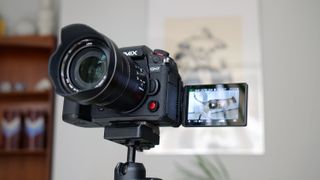
How to choose the best vlogging camera
From premium webcams to mirrorless models, the best vlogging cameras come in a range of shapes and sizes. The features you need will vary depending on what and how you like to shoot and include the following:
Vari-angle screen
If you’re a solo filmmaker, for example, you’ll probably want a camera with an articulating touchscreen which makes it much easier to frame shots when working by yourself. Equally, if a lot of your content involves speaking to the camera, you’ll need an external microphone input to ensure you capture top-notch audio for your audience. Reliable face-tracking autofocus will also mean that your subject stays sharp, even if they move within the frame.
Stabilization
A lot of vloggers like to walk and talk at the same time. If this is your style, you should consider a camera with in-body image stabilization. This will help to smooth out any shaky motion caused by your footsteps and make footage much more watchable. Some cameras go a step further with an integrated gimbal which counteracts motion on several axes to stay level, like the DJI Pocket 3 – our top pick in this guide.
Resolution and frame rates
Almost all of the best vlogging cameras can now shoot in 4K resolution as standard. But it’s important to look beyond resolution alone. High frame rates of 120fps and above will allow you to shoot stunning slow-motion footage, for example. And if post-processing is part of your workflow, 10-bit color depth will give you greater flexibility in the editing room.
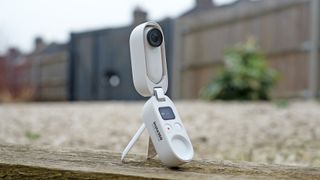
What kind of camera do vloggers use?
As you can tell from the buying advice above, vloggers use a wide range of different cameras depending on their specific needs. Here's the key types:
Mirrorless
Many vloggers favor mirrorless models for their combination of image quality, performance and flexibility. The best mirrorless vlogging cameras feature high-resolution sensors, in-body image stabilization for smoother footage, plus the option to swap lenses to suit different shooting scenarios – all in packages that are relatively portable. Mirrorless cameras are also more likely to feature ports for connecting external accessories, such as microphones, headphones and hot-shoe lights.
Compact
That said, some vloggers prefer to prioritize portability. Truly tiny cameras like the Insta360 Go 3S sacrifice total creative control in favor of quick, simple accessibility for capturing off-the-cuff footage. Compact cameras like the Sony ZV-1 can represent a good middle ground for a lot of vloggers, offering solid image quality and manual control options, yet still in a form factor that can comfortably slip into a pocket.
Action
Other vloggers choose cameras which are specifically suited to their shooting needs. Rugged models like the GoPro Hero 13 Black, for example, offer advanced connectivity and live-streaming options, plus plenty of creative modes, in a sturdy package that makes it easy to shoot vlogs even in extreme weather conditions.
Webcam
Vloggers who stream from a seated position will often favor a premium webcam like the Razer Kiyo Pro Ultra, which deftly fills a unique niche. Equally, those who want a dedicated tool to record while they walk-and-talk might use something like DJI’s Osmo Pocket 3.
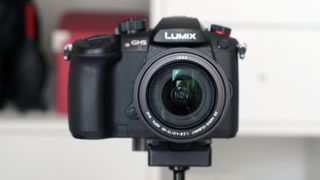
Meet the team
Our expert team of reviewers get privileged access to all the latest and greatest vlogging cameras and have captured countless hours of video footage while testing these versatile video tools in true-to-life scenarios.

As Cameras Editor, Tim looks after all cameras content on Tech Radar. This includes buying guides, opinions, reviews and news, and covers anything from mirrorless cameras to film and smartphones. He has been cutting his teeth in the photo and video industry for almost 20 years.

Mark is TechRadar's Senior news editor and has been a technology journalist since 2004. Formerly Trusted Reviews and TechRadar's cameras editor, Mark has tested cameras over many years from all of the leading brands.

Sharmishta is TechRadar's Managing Editor for the APAC region, looking after the day-to-day functioning of the Australian, New Zealand and Singaporean editions of the site. Her expertise lies in photography, having been reviewing cameras and lenses for the last seven years. This has led to her also becoming the Managing Editor of the Australian edition of Digital Camera World.

Sam has been writing about tech and digital culture for over 20 years, starting off in video games journalism before branching out into the wonderful worlds of consumer electronics and photography. Over the years he has written for Wired, Stuff, GQ, T3, Trusted Reviews and PC Zone, and now lives on the Kent coast in the UK – the ideal place for a camera reviewer and content creator to ply their trade.

Paul is a digital expert. In the 20 years since he graduated with a first-class honours degree in Computer Science, Paul has been actively involved in a variety of different tech and creative industries that make him the go-to guy for reviews, opinion pieces, and featured articles.
How we test vlogging cameras
How we test vlogging cameras
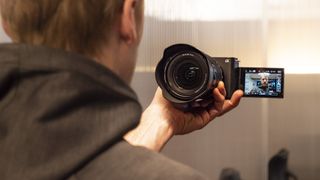
☑️ 100s of cameras reviewed
☑️ 15 years of product testing
☑️ Over 16,000 products reviewed in total
☑️ Nearly 200,000 hours testing tech
The most important features for a vlogging camera are its video quality, autofocus, in-body image stabilization and audio options, so those are the main areas our tests focus on.
To review the video quality, we shoot at the camera's highest resolution and frame-rate in a variety of handheld scenes, including the popular walk-and-talk style, to see how it handles colors, skin tones, detail and rolling shutter. We also include high-contrast scenes to test how well the auto-exposure and white balance adapt to changes in lighting.
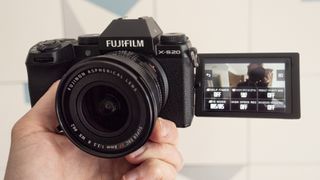
These tests are also a good opportunity to the test the vlogging camera's Face and Eye tracking autofocus, along with the quality of its stabilization (both electronic and mechanical, if available). Another thing we test in these scenes is an oft-overlooked part of the vlogging equation, the built-in microphones. If the camera has a microphone input, we'll also use it with an external lav mic to see how the quality compares to its internal audio.
Many of the latest vlogging cameras include additional features like flat color profiles, articulating touchscreens, built-in ND filters and, in Sony's case, a 'product showcase' feature that's ideal for those who run a YouTube channel from home. If available, we test all of these functions to see how they fare compared to their closest rivals, then wrap up our conclusions based on our various impressions of the camera's build quality, design, video quality, audio quality and features.
Get daily insight, inspiration and deals in your inbox
Sign up for breaking news, reviews, opinion, top tech deals, and more.

Tim is the Cameras editor at TechRadar. He has enjoyed more than 15 years in the photo video industry with most of those in the world of tech journalism. During his time as Deputy Technical Editor with Amateur Photographer, as a freelancer and consequently editor at Tech Radar, Tim has developed a deeply technical knowledge and practical experience with cameras, educating others through news, reviews and features. He’s also worked in video production for Studio 44 with clients including Canon, and volunteers his spare time to consult a non-profit, diverse stories team based in Nairobi. Tim is curious, a keen creative, avid footballer and runner, and moderate flat white drinker who has lived in Kenya and believes we have much to enjoy and learn from each other.
- Chris Rowlands
- Mark WilsonSenior news editor


